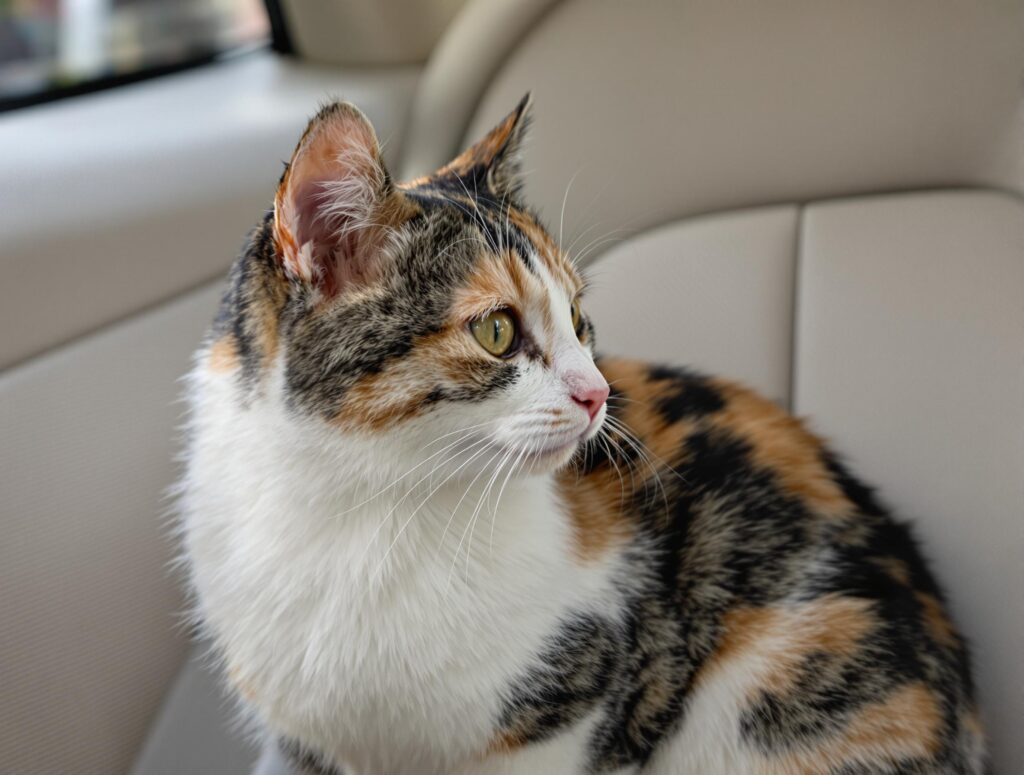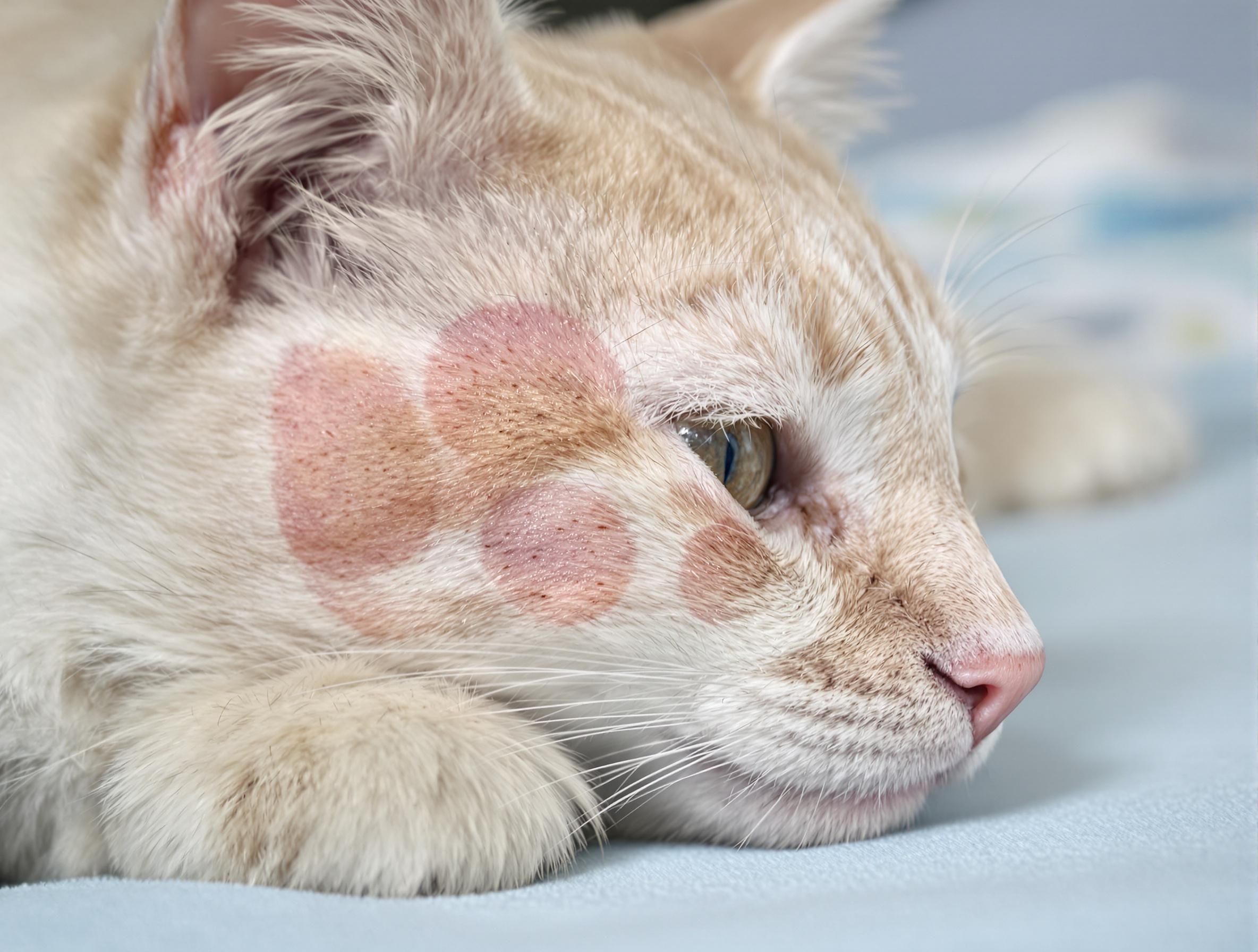
Key Takeaways:
- Use a secure, well-ventilated carrier and anchor it in the back seat to keep your cat safe during travel.
- Pack essential items like litter supplies, food, water, and comfort items to help maintain routine and reduce stress.
- Plan for long drives or overnight stays, and use calming strategies to help your cat adjust to car rides more easily.
Cats aren’t exactly known for their love of travel, but that doesn’t mean a road trip is out of the question. With the right preparation, even the most home-loving feline can handle car rides with less stress and more ease. It all comes down to making the experience feel safe and familiar.
At PetHealthMD, we help pet owners prepare for moments just like these. This guide walks you through practical, low-stress ways to keep your cat safe and comfortable on the road, whether you’re driving across town or heading out on a longer trip. With the right strategy, you can turn car travel into something your cat tolerates—or maybe even enjoys.
Start With a Secure and Comfortable Carrier
A sturdy, well-ventilated carrier is one of the most important items for safe cat travel. Whether you choose a hard-sided or soft-sided model, make sure it’s large enough for your cat to stand, turn around, and lie down comfortably. This not only helps them feel more secure, but it also makes the trip safer for everyone in the car.
For added safety, place the carrier in the back seat and secure it with a seatbelt. This prevents it from sliding or tipping during turns and stops. Avoid placing the carrier in the front seat, especially if your car has airbags, which can be dangerous for pets in a crash.
To make the space feel familiar, line the carrier with a blanket or towel that smells like home. You can also add a favorite toy or use a calming pheromone spray to reduce stress. Creating a cozy, consistent environment can help your cat settle in more easily for the ride.
Explore cat carriers and crates for safe and stress-free travel.
Essential Supplies to Pack for the Road
Once you’ve secured your cat’s travel carrier, the next step is packing everything they’ll need to stay comfortable and cared for on the road. Being prepared means fewer surprises and a smoother experience, especially on longer drives. A good rule of thumb is to think about what your cat uses in a typical day, then plan for that on the go.
Here are the must-have cat travel essentials:
- Litter box and scoop: Portable or disposable litter boxes work well for pit stops or overnight stays.
- Litter and waste bags: Keep enough waste bags on hand to clean up along the way.
- Food and water: Pack your cat’s regular food and bottled water to avoid sudden changes.
- Collapsible bowls: Easy to store and great for quick breaks.
- Familiar items: A blanket, toy, or something with your scent helps reduce stress.
Keeping a small travel bag just for your cat makes it easier to stay organized. If you’re planning more than a few hours in the car, having these supplies ready helps you focus on the drive while keeping your cat content. For quality cat travel supplies and health essentials, visit 1-800-PetMeds.

How to Keep Your Cat Calm in the Car
Even with a cozy carrier and familiar supplies, car rides can still be overwhelming for some cats. The unfamiliar sounds, movements, and smells may trigger anxiety, especially during longer trips. Fortunately, a few gentle strategies can help ease their stress and make the experience more manageable.
Try these calming tips while on the road:
- Take short practice drives: Start with five- to ten-minute rides to help your cat adjust gradually.
- Use calming aids: Pheromone sprays or calming treats can make a big difference during transitions.
- Drive smoothly: Minimize sharp turns and sudden braking to keep the ride as gentle as possible.
- Lower the volume: Keep music or conversations soft to avoid overstimulation.
- Cover the carrier: A light blanket over part of the carrier can help reduce visual stress without blocking airflow.
You can find calming products for cats to help create a more relaxed travel experience.
The calmer the environment, the more relaxed your cat is likely to feel. With a bit of patience and the proper setup, your cat may learn to settle in and even nap during the ride.
Prepare for Overnight Stays or Long Trips
Long trips with overnight stops can be manageable if you’re prepared. Cats can be sensitive to new places, so helping them feel secure is the priority. Recreating a consistent setup, even in a hotel room, makes unfamiliar surroundings feel more like home.
Choose pet-friendly accommodations that welcome cats, not just dogs. Call ahead to confirm details like extra fees, room location, or required pet paperwork. The less you have to sort out on arrival, the smoother the transition will go.
When you arrive, set up your cat’s space right away. Use the same bedding and litter setup from the car to keep things familiar. Giving your cat a predictable environment—food in the same dish, litter in the same spot—can go a long way in reducing stress.
Safety Questions While Driving With Your Cat
Can I let my cat roam freely in the car?
No—this is one of the biggest safety risks. A loose cat can distract the driver, interfere with pedals, or panic and hide in hard-to-reach places. Always use a secure, well-ventilated carrier anchored with a seatbelt.
Where should I place the carrier in the car?
The back seat is the safest option. Avoid the front seat if your car has passenger-side airbags, which can be dangerous even with the carrier in place. Use a seatbelt or carrier strap to keep it stable.
Can I crack the windows for air?
Yes, but only slightly. Avoid opening them wide enough for your cat to stick its nose—or paw—through, and never open the carrier with the windows down. Good airflow is helpful, but safety comes first.
How can I tell if my cat is feeling stressed in the car?
Look for signs like frequent meowing or crying, heavy breathing, drooling, or restless movement. Physical signs of stress include wide pupils, ears pressed flat against the head, or hiding in the carrier’s corners. If you notice these behaviors, your cat might need extra comfort and support.
How often should I stop to check on my cat?
Aim for a break every 2–3 hours, especially on long drives. Use these stops to offer water, check the carrier’s temperature, and make sure your cat is calm and comfortable.
Is it okay to leave my cat in the car for a few minutes?
It’s best not to. Even with windows cracked, cars can heat up or cool down dangerously fast. If you must step away, take your cat with you or ensure another person stays in the car to monitor them.
When should I talk to my vet about travel worries?
If your cat shows intense stress signs—like aggressive behavior, vomiting, or refusal to go near the carrier—it’s time for a chat with your vet. They can create a personalized plan that might include anti-anxiety medications or behavior training techniques for longer trips.
A Little Planning Goes a Long Way
Car travel might not come naturally to most cats, but that doesn’t mean it has to be stressful. With the right carrier, supplies, and calm routine, your cat can stay comfortable and safe on the road. Taking the time to prepare pays off with a smoother experience for both of you.
At PetHealthMD, we offer practical advice to help you travel smarter with your pets—from choosing cat travel gear to managing stress. Whether you’re planning a weekend getaway or a cross-country move, our tips can help you create a safer, more relaxed journey. Visit our cat category to find everything you need for a healthy and happy feline adventure.





